You might have seen Belarus in the news quite a lot over the last year. One of the biggest issues (among oh-so many) is the flags being waved by the protesters. It’s hardly the first time, with the flag of Belarus having changed many times over the years, reflecting its turbulent history of shifting leaders and alliances. So let’s have a look at the flag of Belarus! Not just the official one, not just the flag waved by protesters, ALL of them! …Or y’know, three of them.
Current Flag of Belarus
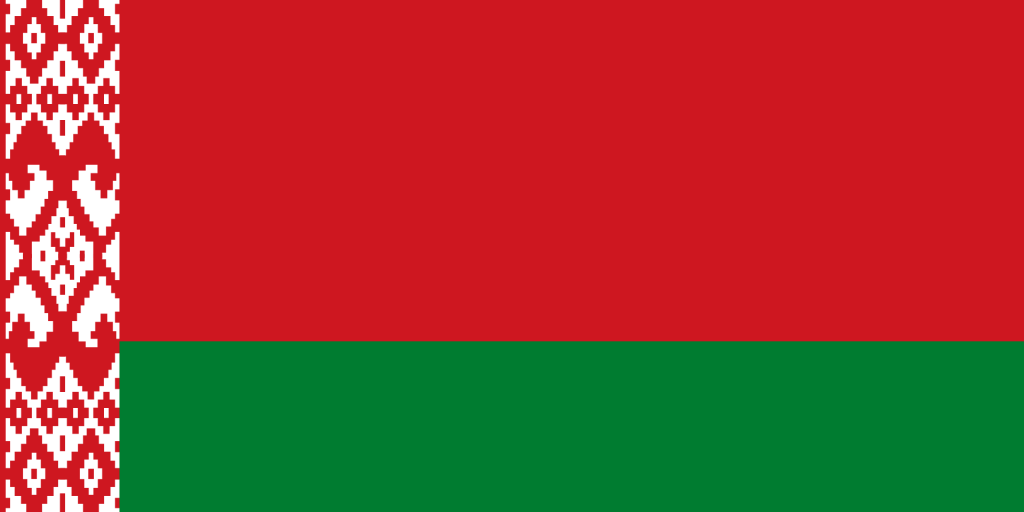
Let’s start off by looking at the current official flag. The one you’ll see flying from government buildings, if not necessarily the one everyone recognises. Interesting isn’t it? It’s like someone cut a strip off a Christmas jumper and flew it from a pole! This design was implemented as recently as 2012, replacing an earlier version that had more white spacing out the margins of that elaborate pattern on the left-side.
Speaking of, let’s focus in on that pattern. It resembles a ‘rushnyk’, which is a ceremonial cloth in many eastern Slavic cultures embroidered with elaborate symbols and cryptograms usually passed down by the people of the region. You can find this kind of cloth throughout the region, including in neighbouring countries, usually displayed for religious events like weddings and funerals. The particular pattern used for the flag of Belarus was designed by Matrona Markevich in 1917 and adopted for the Soviet version of the national flag on Christmas day, 1951. Granted, that version had the colours inverted.
If you turn the pattern horizontally, you can get a better idea of what its creator was trying to evoke. The pattern is sometimes called the ‘Rising Sun’, as this is what the central rhombus figure is intended to represent. Rather than just being a fun, pleasing pattern, there has been serious thought and consideration put into every part of it. Interestingly, it hadn’t been made specifically for the flag, rather it was crafted years earlier as a simple piece of embroidery made by a peasant villager, chosen from the archives to represent the flag of Belarus as a whole. Quite the honour.
As for the red and green adorning the rest of the flag, there’s no official meaning, though it’s been posited by president Alexander Lukashenko that the red represents freedom and sacrifice while the green represents life. Quite ominous, but certainly believable, especially when one considers just how much death and destruction faced the people of Belarus during WW2, to the point that some estimate up to half of the country was either killed or forcibly displaced.
Flag of the Byelorussian Soviet Socialist Republic
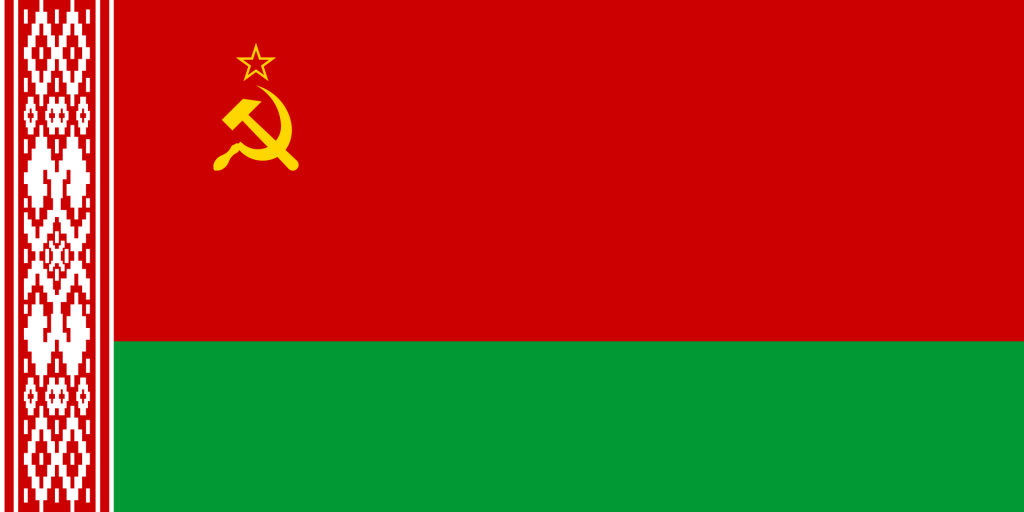
As you can see, what came before is pretty similar but with a few striking differences. First of all, the hammer and sickle… I mean, it’s pretty obvious that’d be there. It’s a red background, it begs for a hammer and sickle on it to begin with! Topped with a yellow star too, the very same iconography used on the Soviet Union flag itself. It’s a bit like if all the countries in the European Union had a star on a blue background because that’s just how the EU’s flag rolls.
Also, the pattern. As you can see, the colours have been inverted and the margins have changed quite a bit. It’s like the broader image has been zoomed out a touch, letting you more clearly see the rows of dots evenly spaced out through the entire pattern. This version of the flag of Belarus was implemented in 1951 as stated before, so it wasn’t the ONLY flag of Soviet Belarus. …Though to be honest, the others aren’t all that interesting. Variants on plain red flags, sometimes with a hammer and sickle, usually with the Cyrillic acronym for ‘Belarus Soviet Socialist Republic’.
The White-Red-White Flag of Belarus
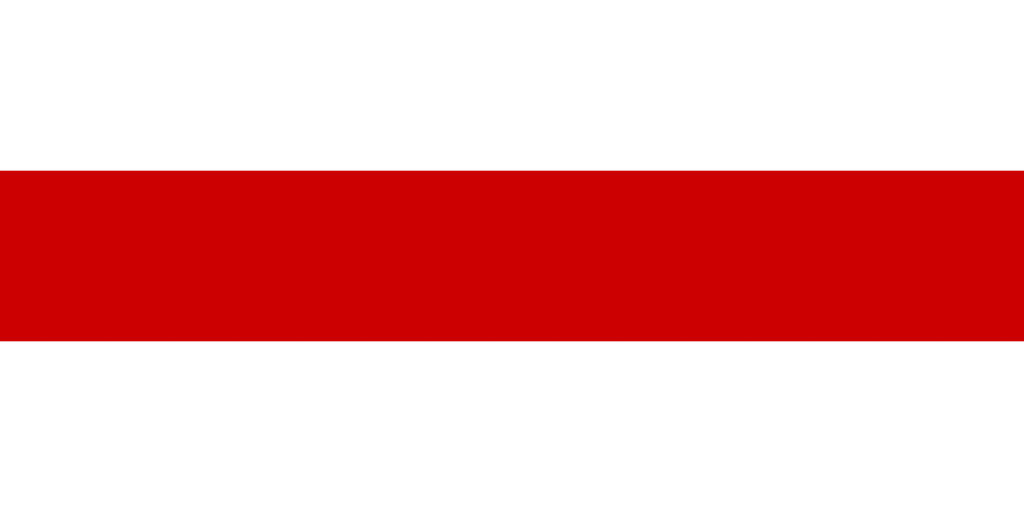
This is the one people have been waving at protests. It is not, however, a new creation! As a matter of fact, it’s been the flag of Belarus on more than one occasion, with very different kinds of governments claiming its usage. The ‘white-red-white’ flag was originally implemented for the ‘Belarusian Democratic Republic’, a state proclaimed during the turmoil of the revolution on the 9th of March 1918. As the territory had been controlled by Tsarist Russia previously, there were heavy disputes over who actually had the right to declare themselves the government and the BDR never managed to control the entire region, fighting against both German military occupation and a competing pro-Soviet government, eventually being ousted entirely during the Polish-Soviet war of 1919-1921.
So that’s that government gone then… Not so! As a matter of fact, the Belarusian Democratic Republic still technically exists! It is to this day the longest surviving government in exile, gaining renewed relevance in light of the recent protests. Does that mean the people of Belarus are demanding this government take over? …Not necessarily. The flags place in history has far outstripped that one government, with it serving as a rallying point for many competing ideological groups who would likely find themselves opposed if Lukashenko were ousted and they became more free to tackle other problems. For now though, it’s a potent and simple symbol: An independent Belarus not led by Lukashenko.
It’s worth noting that the flag was actually reused after the BDR. On the 19th September 1991, Belarus adopted its current name and that flag. Understandably so, it is the most notable non-Soviet flag of Belarus, so it was a natural pick! At this time, Belarus was following the trend of most post-Soviet countries and trying to disassociate itself from the past. The problem is, their present wasn’t looking too much better. The wave of sweeping liberalisation reforms across the former Soviet Union saw a catastrophic economic collapse and collapse in living standards, marked by the rise of oligarchs and the centralisation of wealth into the hands of a few, often in cahoots with the politicians in charge.
It’s this environment that catapulted the previously unknown Alexander Lukashenko to national prominence. He spoke of being neither left nor right, but against the corruption that robbed Belarus of its future. He captured the support of Soviet nostalgists, capitalism supporters who simply felt they were being exploited by the new government and many of those inbetween. As a result, he won the second round of Belarus’s first democratic election by a landslide… And proceeded to change the flag of Belarus to the current one in a 1995 referendum which proposed strengthening cultural and political ties with Russia. That’s how it’s been ever since.
So why the push to change the flag of Belarus in the first place? Well… The white-red-white flag may be popular among many, but there’s another part of history that stains its use in some quarters. While given the history we know now, it’s clearly unfair to paint it as the only meaning of the flag, it’s worth noting that it found significant use under Nazi occupation. Pro-fascist collaborators fell back on the white-red-white flag for the same reasons as other Belarus nationalists and it found itself on the uniforms of Waffen SS detachments. To give the flag some credit, its creator Duž-Dušeŭski was an ardent opponent of the Nazis and was murdered in a death camp for hiding Jewish refugees in his home.
Pahonia White-Red-White Flag
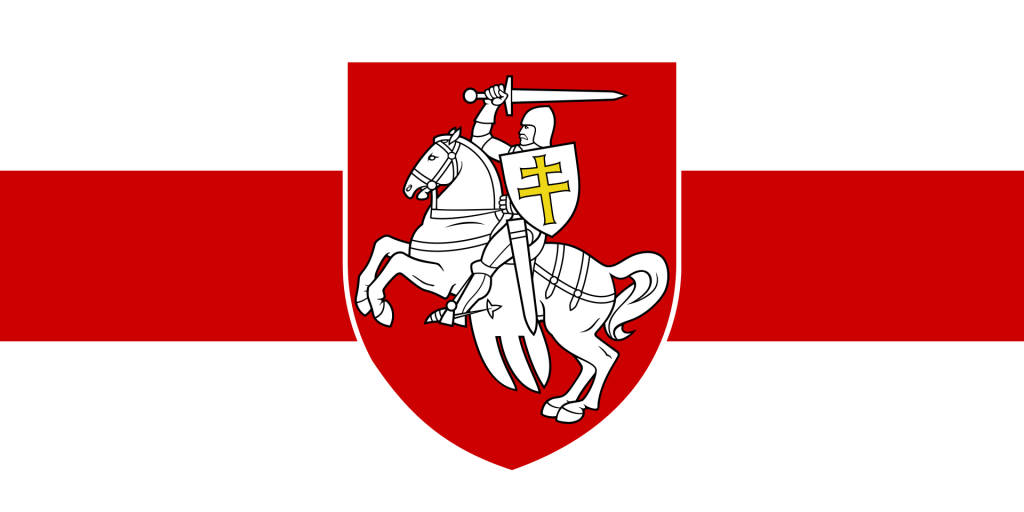
Now doesn’t this look familiar? This flag of Belarus is a variant of the commonly used white-red-white flag that’s started cropping up during the last year’s protests. The coat of arms in the middle is the ‘Pahonia’, a symbol that dates all the way back to the early 15th century… When it was (and still is) the coat of arms for Lithuania. What’s important to understand is that a lot of countries simply did not exist as independent entities, ever, until very recently. Belarus’s history is highly entwined with that of Lithuania and one doesn’t have to scratch far under the surface to see the history. Indeed, the white-red-white flag of Belarus is itself derived from the Lithuanian coat of arms! Some might argue that adding it back is simply a natural conclusion of reasserting pre-Soviet identity.
Belarus Coat of Arms
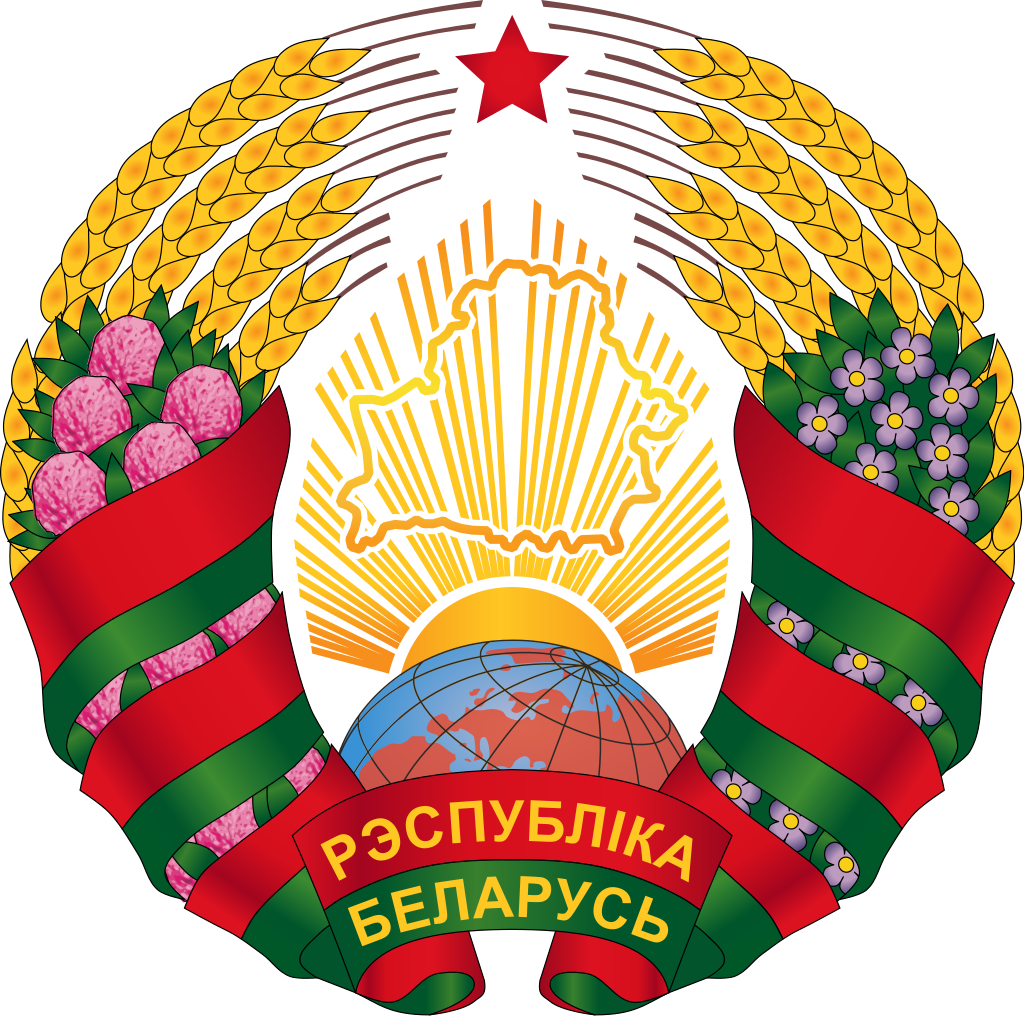
Okay, it’s not a flag of Belarus, but I think this is worth mentioning. Because DAMN, this is so clearly evoking the old Soviet era emblem. Now, there are differences. Most notably that the middle of the emblem now features an outline of the country of Belarus, where previously there was a hammer and sickle. The pure red ribbons are now red and green to evoke the national flag, it no longer has the acronym for the Belarus Soviet Socialist Republic at the bottom and quite interestingly, the globe shows much more of western Europe, when previously it focused on the collective USSR’s territory, showing off much more of Russia and the Central Asian states.
But come on. Those changes really aren’t enough to distract from the fact that this is just the old Soviet emblem. Why is there a red star there, if not to evoke the old Soviet era? Now this doesn’t mean that Belarus is socialist or even pretends to adhere to socialism. The meaning of the red star has somewhat transcended itself, particularly with its tie to the imagery of the Great Patriotic War. Rather than a symbol of the communist ideal, it can be seen as a general symbol of might, glory, victory and so on. The same goes for the rest of the imagery, which is explicitly evocative of the old communist movement but has been depoliticised.
What existed before this coat of arms in that brief post-Soviet, pre-Lukashenko window? …The Pahonia of course. Just even more reason for why protestors would be putting it on the flag they wave. It seems rather clear that there’s a divide of national identity in Belarus between those who identify most closely with their pre-Soviet, Lithuanian cultural roots while others feel more defined by Belarus’s role in the Soviet Union. Of course there are many more who would take completely contrary views, opposing the feudal nature of the Pahonia as well as the Soviet imagery of this current iteration. Those people wave the blank White-Red-White flag of Belarus for now. It seems likely that even if Lukashenko is ousted and the flag and emblem are replaced, there’s going to be a long debate over what exactly is going to replace them.
If any of this has gotten you a little interested in Belarus, you should check out some of our upcoming tours! If you’ve got any interest in Soviet kitsch, or perhaps if you’d like to see another side of the Chernobyl exclusion zone, it’s well worth a visit.





